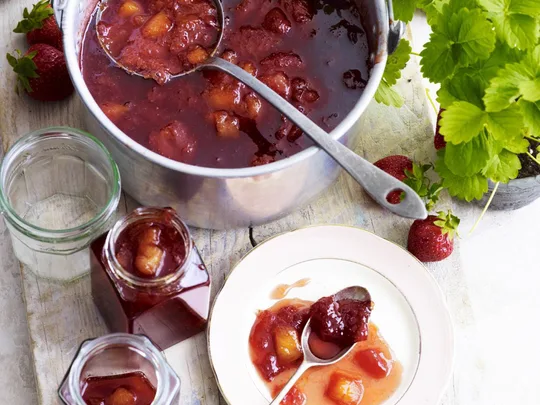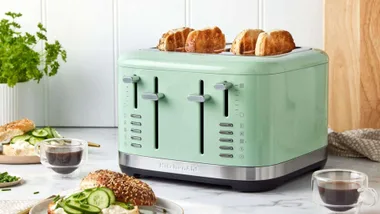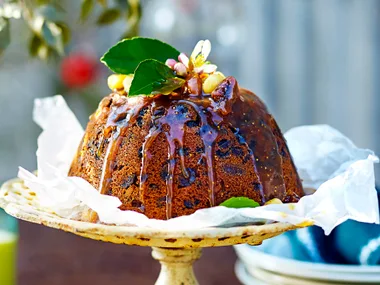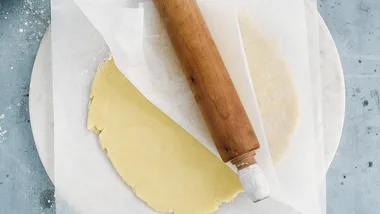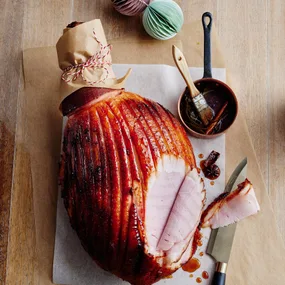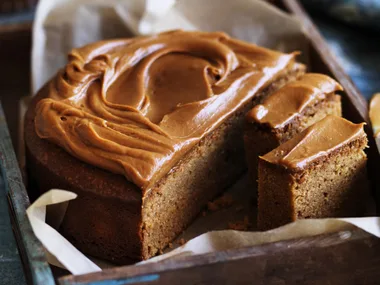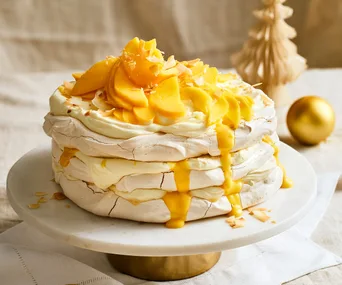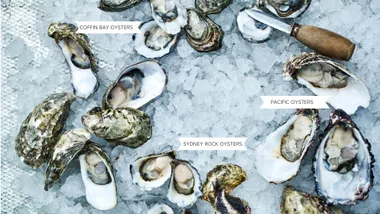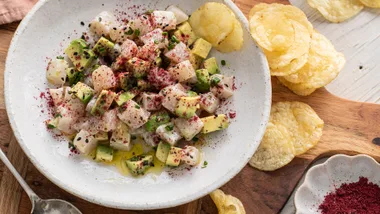Make sure you’re making the perfect preserve, every time.
What’s the difference between jam and jelly?
Jam contains fruit pulp or sliced fruit, while jelly is made from the liquid of cooked fruit that has been strained through a fine cloth.
Both contain pectin, a carbohydrate found in certain fruits which, when combined with acid and sugar, helps a jam, jelly or marmalade to set (jell). Commercial pectin can be bought from health-food stores and some supermarkets; it can be used to set jams and jellies made with fruit low in pectin.
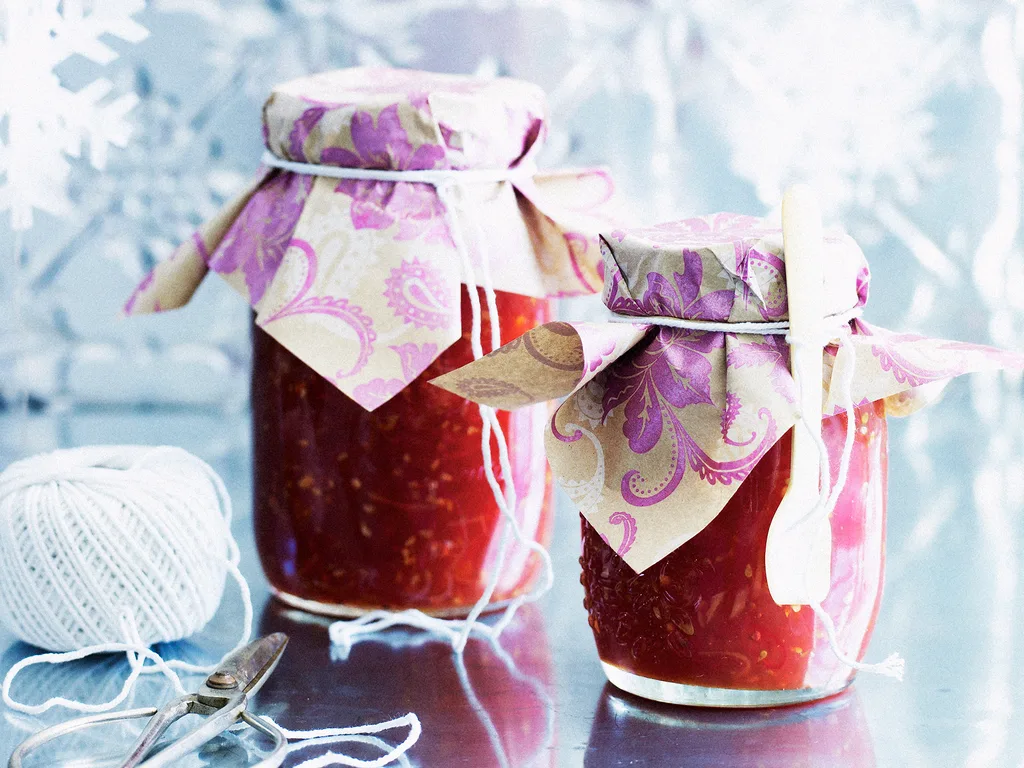
Try this sweet but savoury passionfruit and tomato jam this weekend.
Which fruits are best?
• Grapes, crab apples, currants, lemons, limes, grapefruit, underripe quinces, sour gooseberries, sour apples, sour guavas, sour oranges and sour plums have a good balance of acid and pectin and are great for making jams and jellies.
• Sweet apples, sweet guavas, sweet quinces are high in pectin and low in acid. When making jam or jelly from these fruits, add two tablespoons lemon juice to each kilo of fruit to increase the acid content.
• Apricots, rhubarb, under-ripe peaches and pineapples are low in pectin and high in acid. When making jam or jelly from these fruits, add two tablespoons lemon juice to each kilo fruit to increase the pectin content.
• Pears, melons, peaches, most varieties of strawberries and cherries are low in pectin and acid, so they are usually combined with fruits high in pectin and acid when making jams or jellies.
• Most berries contain only a small amount of pectin, even when slightly underripe, but they can be combined with apples, or can have lemon juice added, to achieve acid/pectin balance.
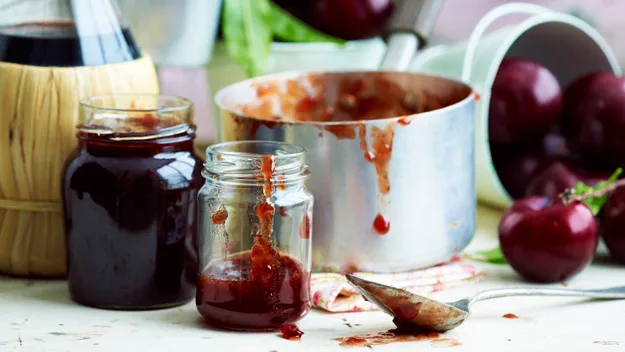
Which pan is best?
Use large aluminium, stainless steel or enamel saucepans or boilers to make jams or jellies; do not use copper or unsealed cast iron pans as the acid in the fruit will damage the metal, and the colour and flavour of the jam or jelly can be affected. The pan needs to be large so evaporation can occur during the boiling process.
Has it set?
To test if jam has set (or jelled), remove the pan from the heat and drop a small amount of jam on a chilled plate or saucer. Allow to cool, then gently push a finger through the jam. If the surface wrinkles, the setting point has been reached. If not, return to the boil and retest at two-minute intervals. You could also use a candy thermometer. Jams (and jellies) will set at 105°C-106°C.

What’s a “cool, dark place”?
Most modern homes have heating in every room, so if a recipe tells you to “store in a cool dark place” consider the garage, cellar or under the house where it’s cool and the temperature is constant. If you live in a wet or humid climate, then use the refrigerator for storage.
How to strain jelly
Fruit mixture can be strained through a damp clean finely-woven cotton cloth, such as boiled unbleached calico or muslin. At a pinch, a new, finely-woven, damp clean tea-towel will do.
Turn a stool upside down on a table and tie the corners of the cloth securely to the legs of the stool (leave the cloth loose enough to dip in the centre). Place a large bowl under the cloth and pour the fruit and its liquid into the cloth. Cover loosely to protect the mixture from dust and insects, and leave the liquid to drip through the cloth; this will take up to 12 hours.

Troubleshooting
Strawberry jam won’t set
Strawberries are low in acid and pectin – both of which are required to make jam set. Add lemon juice or commercial pectin.
Jelly won’t set
Jelly not setting is due to a lack of pectin. If you re-boil the jelly to add commercial pectin, it will lose clarity and texture, but it will at least set.
As a last resort, jellies can be set using a packet of dessert-type jelly crystals. Choose a similar flavour and colour to your homemade jelly, place the jelly crystals in a saucepan with ½ cup water, stir over low heat until dissolved, then add the unset homemade jelly to the mixture; stir over low heat until any lumps are dissolved. As a guide, one 100g packet of jelly crystals should set about 3 cups of homemade jelly.
Cloudy jelly
Before straining, skim off any scum that’s formed on the surface. Leave the fruit mixture to drip through a fine cloth – this can take up to 12 hours. Do not push or force the fruit through the cloth, as this will cause the jelly to become cloudy.
Condensation under jam jar lid
To avoid trapped condensation, fill the hot dry jars right to the top, literally as much as the jars will hold. Seal the jars while still hot. The jam will contract and shrink slightly away from the lids as they cool down to room temperature.
